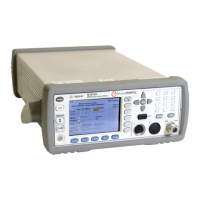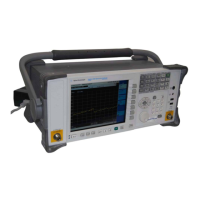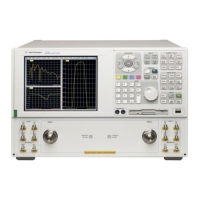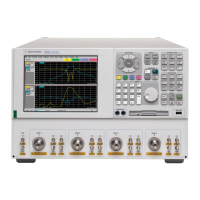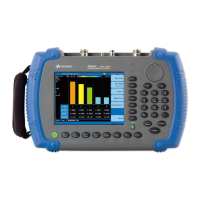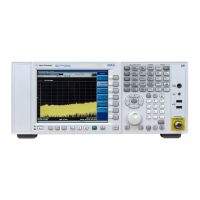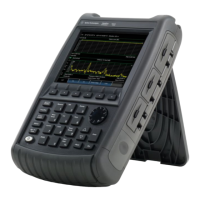General Power Meter Functions 2
N1911A/1912A P-Series Power Meters User’s Guide 77
10 Press and select or to set the trigger edge.
11 Set the trigger buffer size by sending SENSE:BUFFer:COUNt
<buffer_size> command to meter using remote interface.
12 Press or to setup measurement setting such as
measurement averaging, measurement frequency, offsets, duty cycle and
so forth. Refer to “General Power Meter Functions” on page 29 for the
setup procedures.
13 Send *OPC (OPeration Complete) command to meter to set the
operation complete bit in the Standard Event Status register when all
pending device operations are completed.
14 Set the meter to continuous trigger mode by sending
INITiate:CONTinuous ON command to meter.
15 Configure and set the required power sweep range and step on the
power source accordingly.
16 Set the power source trigger input and trigger output, then start
sweeping.
In both power sweep and frequency sweep mode, the meter TRIG OUT to power source
TRIG IN connection is optional. If this connection was not setup previously, you need to
setup the proper Dwell time. You may choose to setup the Dwell time in the power source
step setting to cater the maximum settling time required by the power meter. However, to
achieve maximum speed in power sweep, this setup is recommended. Once the power
reading is settled, the meter will output a TTL signal at the TRIG OUT to the power source
TRIG IN to trigger the power source to step to the next point.
Refer to the P-Series Power Meters Programming Guide for the commands usage details.
Example of command set:
SENSE:BUFFer:COUNt 20
The power meter can be remotely controlled by LAN, USB and GPIB (IEEE488)
programming interfaces. Refer to P-Series Power Meters Installation Guide for details.
